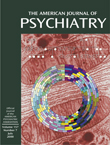Cajal is the classic investigator whose works continue to be quoted in the latest research texts throughout the world. The main result of his research was to identify the neuron as the basic unit of the nervous system; he devised the basic model for understanding the structure of the nervous system that is still applicable today. His research set basic foundations for the investigation of nervous system functioning.
After Cajal overcame the difficulties of working in a peripheral scientific environment in the international context—as was the case of Spain when he was conducting research—his work began to spread and attain world recognition. Growing recognition of his research culminated in Cajal’s winning the Nobel Prize for Medicine in 1906. Cajal’s was a major contribution toward the scientific renaissance in Spain during the first third of the twentieth century.
The first version of Cajal’s Advice appeared in 1897. The book is directed toward young investigators working in Spain at that time. Cajal’s Advice is divided into nine chapters, beginning with thoughts about general methods and organization. “Beginner’s traps” are considered in the second section, where Cajal observes that excessive admiration for the work of masters is one of the most unfortunate worries of intellectual youth: “Even when the work of a genius is subjected to critical analysis and no errors are found, it is important to realize that everything he has discovered in a particular field is almost nothing in comparison with what remains to be discovered.”
The section titled Intellectual Qualities proves worthwhile reading. Here Cajal, a patriotic Spaniard, says, that “patriotism merits special attention as one of the emotions that should inspire the man of science.” Perhaps a childhood and adolescence in a rural environment of difficult conditions contributed to his fervent love of country. After studying medicine in Zaragoza, young Cajal acted as a military doctor in the Cuban War. Here, perhaps, his contact with liberal, reformist thought and personal experience contributed to his strong patriotic vision of science.
The section on What Newcomers to Biological Research Should Know discusses the following themes: general education, the need for specialization in foreign languages, how monographs should be read, the necessity of seeking inspiration in nature, mastering a technique, and the original data. All useful discussions pertinent to the developing of research technique.
In the section concerning social factors beneficial to scientific work, Cajal goes so far as to suggest what to look for in a wife. Genius is always fascinating. Cajal was certainly a genius. His unparalleled research work, of course, bespeaks that genius. But geniuses, so remote from ordinary mortals, are too humanly like the rest of humanity when it comes to private tribulations. For example, Cajal believes that the “man” of science should marry because the aid of a wife is just as necessary in youth as in old age. He seems not to have considered the possibility of a woman of science.
Other sections of the book include the topics of diseases of will, on writing scientific papers, and stages of scientific research. Since Cajal states in the preface, “I wrote this book for Spain, and for now it should remain among Spaniards,” young investigators working in developed countries today may find some of his advice dated and unsuitable (i.e., “It is enough for the Spaniard to translate the following four languages: French, English, Italian, and German”). However, the young investigator will have a good picture of how difficult starting a scientific career is in countries without a strong policy of supporting research. Since many of Cajal’s descriptions still apply in developing countries, young researchers from such countries may find Cajal’s problems in Spain at that time very familiar (lack of financial support, teachers inspired to produce little or no original work, absence of contemporary appreciation, etc.). Yet to the young and developing, the hopeful, and the willing to work, this book will stimulate inspiration.

